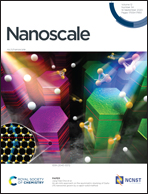Atomic structure causing an obvious difference in thermal conductance at the Pd–H2O interface: a molecular dynamics simulation
Abstract
Thermal transfer across solid–liquid interfaces is influenced by multiple factors such as surface wettability, interfacial water layer density, molecular structure, and mass density depletion length. However, the dominant factors in interfacial heat transport are yet to be investigated. In this work, we explore the contributions from these factors by employing the Pd-water model for water molecules forming ordered, partially ordered, and disordered structures on Pd (100), (110) and (111) surfaces, respectively. The results revealed that the ordered water layer on the (100) surface can introduce a “phonon bridge” at the solid–liquid interface to improve thermal transfer, while the partially ordered water layer on the (110) surface can further promote thermal transfer due to the enhanced interfacial friction. On the other hand, the decreased density depletion length also makes dominant contributions to the enhancement of interfacial thermal transfer. The results are explained by the interfacial friction coefficient, surface potential energy distribution and density depletion length. We also introduce an efficient technique by tuning the vacancy defects on the solid surface to tune the atomic structure as well as the thermal transfer. Our study reveals the complex relationship between the atomic structure of the crystal face, the water layer structure and the thermal boundary conductance, which will inspire more experimental and theoretical studies toward the improvement of interfacial thermal transport by tuning the structure of the water layer.



 Please wait while we load your content...
Please wait while we load your content...